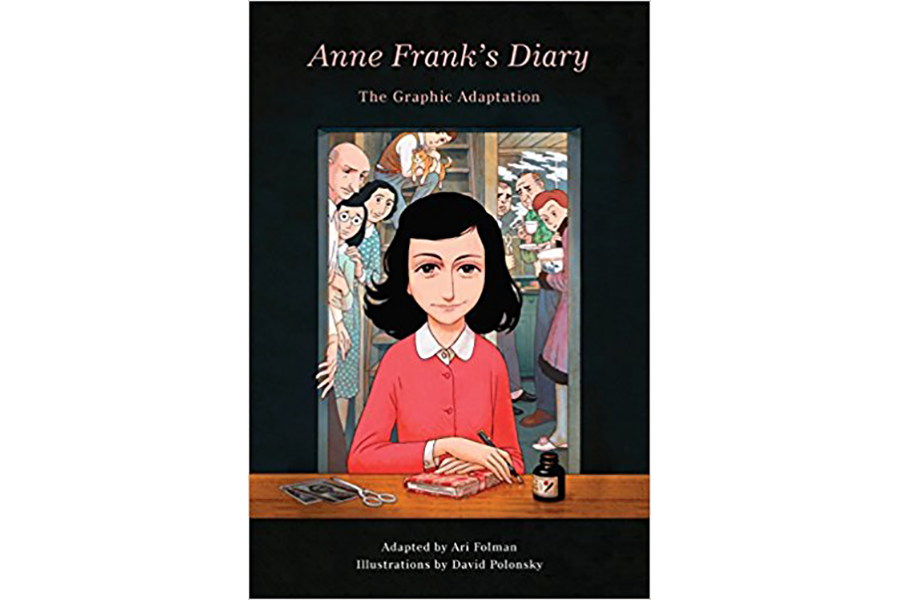'Anne Frank's Diary' is a profoundly moving graphic presentation of the classic
Loading...
Of all the accidental classics in the canon, the books whose authors never intended them to be read even by their friends and family, much less by generations yet unborn, none harrows us like "The Diary of Anne Frank." The book is the diary-jottings of a teenage Anne Frank, made while she was hiding with her family in the secret annex of an office building in Nazi-occupied Amsterdam. The family was eventually discovered, and Anne died in the Bergen-Belsen concentration camp in 1945 at the age of 15. The diary she kept in hiding was published in 1947 and has been in print ever since, translated into every language, read by countless school children who encounter this sharp, funny, emphatic girl their own age and then learn her fate, often their first introduction to the enormous subject of the Holocaust.
The self-portrait that young diarist creates in the pages of the diary she received as a birthday present is rendered indelible in large part by the sheer disproportion involved. On the page, we read of daily hardships interspersed with dry commentary and ardent imaginings, and we smile, because the innocent humanity of the author is so immediately recognizable: We all know (or have been) somebody like Anne. But outside the page, brooding and gathering dark strength in the world beyond that Amsterdam annex, an entire apparatus of state machinery is intent on the annihilation of this little person. In the sane version of Anne Frank’s life, this diary would have been tucked away in some hope chest for decades and maybe read with comfortable embarrassment by its matronly author today, at age 88. In reality, a nightmare intervened.
Given all this, "The Diary of Anne Frank" seems the least likely material imaginable for a graphic novel adaptation like the one now appearing from Pantheon books, edited by Ari Folman and illustrated by David Polonsky. Indeed, Polonsky has said this was his own initial reaction: Of course not. The whole subject is so revered and so relentlessly tragic that rendering it in comic-book form seems like a flimsy and sordid sacrilege.
In the handling that Folman and Polonsky give it, what happens is nothing short of a revelation. The story told in Anne Frank’s diary has been re-told in many different forms over the years. There have been stage plays, movies, musicals, operas, and earlier comic-art adaptations. But nothing has ever quite captured the strange, stubborn delicacy, the forlorn wistfulness, of the diary like this before.
Polonsky’s artwork gets the lion’s share of the credit for this, naturally enough, and the key to his approach is its variety: Some pages are filled with variety, as when Anne is fantasizing about all the fineries she’d like to bring for her stay in a luxurious version of the Annex, and other pages are devoted to a single image, as when Anne tries to imagine the conditions at “the faraway camps” where rumor has it hundreds and thousands of deportees are being murdered. Polonsky creates a precise visual iconography for each of the eight people (the Franks and four others, including a boy named Peter with whom Anne gradually falls in love) living their cramped and furtive life in the Annex and then innovates endlessly on those designs, morphing day-to-day reality into all the shapes of Anne’s adolescent fantasies.
This account of life in the Annex is so wrenchingly hypnotizing precisely because the hiding-place is no refuge but rather a bizarre kind of staging-area. The family has left their bright and solid middle-class life; they’re living in an attic on starvation rations while they wait and hope for a better future the reader knows isn’t coming. Anne is both a chronicler of daily depression and a normal teen, swinging between histrionics and sarcasm on an almost hourly basis, telling herself: “This gloom will pass.”
Readers all over the world have treasured that hard-headed optimism for decades, but although some members of her family will survive the betrayal that uncovers their hiding-place to the Nazi forces, Anne herself will be transported to one of those faraway camps, where she and her sister Margot will die miserable deaths from typhus only a month or two before the camp was liberated by British troops in April of 1945.
Seeing all this in addition to reading it is devastating. When Anne dreams of flying, we see her flying; when she dreams about promenading down the street on Peter’s arm, we see the admiring gazes of onlookers; when Anne writes “What I’m experiencing here is a good beginning to an interesting life …” we see, in one of the book’s most wrenching images, the adult woman Anne never became, sitting at a desk in front of her typewriter, with faded newspapers commemorating her wartime adventures framed on the wall behind her.
Anne Frank’s Diary: The Graphic Adaptation represents an artistic gamble; in hands less skilled and daring, it could have been a shocking failure. Instead, readers will here enjoy a genuine work of art … and have their hearts freshly broken.






